#heritage acres
Explore tagged Tumblr posts
Text
"The Lower Ninth Ward of New Orleans has recently witnessed an incredible eco-renaissance following decades of damage and neglect.
Led by a local community development group, a 40-acre wetlands park has been restored to glories past with hundreds of local trees that attract over a hundred species of birds, plus joggers, picnickers, and nature lovers besides.
The story begins with Rashida Ferdinand, founder of Sankofa Community Development Corporation (CDC). Growing up in this historic part of New Orleans, where Black homeownership thrived, where Fats Domino was born, and where locals routinely went out into the wetlands to catch fish and crustaceans, she watched as it suffered from years of neglect.
Poor drainage, ruined roads, illegal trash dumping, and unmitigated damage from hurricanes slowly wasted the wetland away until it was a derelict eyesore.
In the name of restoring this wild heritage indicative of the culture in the Lower Ninth, and in order to protect her communities from flooding, Ferdinand founded the Sankofa CDC, and in 2014 entered into an agreement with the City of New Orleans for the restoration of Sankofa—a 40-acre section of neglected wetlands in the heart of the Lower Ninth.
The loss of Sankofa’s potential to dampen flooding from storms meant that over the years dozens of houses and properties were flooded and damaged beyond the ability of the inhabitants to recover. Forced out by a combination of nature’s fury and government failure, the cultural heritage of the community was receding along with the floodwaters.
Ferdinand knew that restoring natural flood barriers like Sankofa was key to protecting her community.
“Hurricane protection is a major concern in the community, but there’s a lack of trust in the infrastructure systems that are supposed to protect us,” Ferdinand told the Audubon Society.
Today, Sankofa Wetlands Park is a sight to behold. Hiking trails snake through a smattering of ponds and creeks, where bald cypresses and water tupelo trees continue to grow and cling to the ground even during storms. Picnic benches have appeared, wheelchair-accessible trails connect sections of the park to parts of the Lower Ninth, and local businesses are seeing more visitors.
It needed a lot of work though. Thousands of invasive tallow trees had to be uprooted. 27,000 cubic meters of illegally dumped trash compacted into the dirt had to be removed. A 60-year-old canal dug by the US Army Corps of Engineers had to be disconnected, and all new native flora had to be planted by hand.
Audubon says that Ferdinand routinely can’t believe her eyes when she looks at the transformation of Sankofa into its current state.
“Seeing butterflies, birds, and other pollinators in the park is a sign of a healthy ecosystem,” she says. “All we had to do was create the right conditions.”
Slated for official completion in 2025 with an outdoor amphitheater, interpretive signage, and additional trails, Ferdinand and the CDC have their eyes set on an even larger area of wetlands to the north of Sankofa.
Along the way, Ferdinand and the CDC attracted many helping hands, and entered into many partnerships, But the catalyst for change arose from the spirit and determination of one woman in the right place at the right time, for the benefit of hundreds in this historic heart of a historic city."
-via Good News Network, September 17, 2024
#new orleans#louisiana#nola#united states#wildlife#wetlands#ecology#ecological restoration#conservation#good news#hope
3K notes
·
View notes
Text
Unveil the mesmerizing "Carpet Field" in Antalya, Turkey, where summer transforms wheat fields into a vibrant tapestry of handmade carpets.
As the sun blazes, hundreds of acres are adorned with carpets woven with intricate patterns and bold hues. These works of art are not mere decorations but symbols of heritage and skilled craftsmanship.
For days, the carpets bask under the sun's embrace, undergoing a remarkable metamorphosis. Harmful bacteria and insects vanish, while the colors subtly shift, blossoming into soft, pastel tones that shimmer like a desert sunrise.
683 notes
·
View notes
Text
Birds Sing Anew After Residents of New Orleans Ninth Ward Restore 40-Acre Wetland to Historic Glory https://www.goodnewsnetwork.org/birds-sing-anew-from-within-40-acre-wetland-restored-by-residents-of-n-orleans-historic-lower-ninth/

The Lower Ninth Ward of New Orleans has recently witnessed an incredible eco-renaissance following decades of damage and neglect.
Led by a local community development group, a 40-acre wetlands park has been restored to glories past with hundreds of local trees that attract over a hundred species of birds, plus joggers, picnickers, and nature lovers besides.
The story begins with Rashida Ferdinand, founder of Sankofa Community Development Corporation (CDC). Growing up in this historic part of New Orleans, where Black homeownership thrived, where Fats Domino was born, and where locals routinely went out into the wetlands to catch fish and crustaceans, she watched as it suffered from years of neglect.
Poor drainage, ruined roads, illegal trash dumping, and unmitigated damage from hurricanes slowly wasted the wetland away until it was a derelict eyesore.
In the name of restoring this wild heritage indicative of the culture in the Lower Ninth, and in order to protect her communities from flooding, Ferdinand founded the Sankofa CDC, and in 2014 entered into an agreement with the City of New Orleans for the restoration of Sankofa—a 40-acre section of neglected wetlands in the heart of the Lower Ninth.
The loss of Sankofa’s potential to dampen flooding from storms meant that over the years dozens of houses and properties were flooded and damaged beyond the ability of the inhabitants to recover. Forced out by a combination of nature’s fury and government failure, the cultural heritage of the community was receding along with the floodwaters.
Ferdinand knew that restoring natural flood barriers like Sankofa was key to protecting her community.
“Hurricane protection is a major concern in the community, but there’s a lack of trust in the infrastructure systems that are supposed to protect us,” Ferdinand told the Audubon Society.
Today, Sankofa Wetlands Park is a sight to behold. Hiking trails snake through a smattering of ponds and creeks, where bald cypresses and water tupelo trees continue to grow and cling to the ground even during storms. Picnic benches have appeared, wheelchair-accessible trails connect sections of the park to parts of the Lower Ninth, and local businesses are seeing more visitors.
Visiting birders have recorded sightings of over 100 species of songbirds, ducks, near-shore waders of all kinds, egrets, and herons, and the park also acts as a home and refuge for otters, beavers, and a variety of amphibians and reptiles.
It needed a lot of work though. Thousands of invasive tallow trees had to be uprooted. 27,000 cubic meters of illegally dumped trash compacted into the dirt had to be removed. A 60-year-old canal dug by the US Army Corps of Engineers had to be disconnected, and all new native flora had to be planted by hand.
Audubon says that Ferdinand routinely can’t believe her eyes when she looks at the transformation of Sankofa into its current state.
“Seeing butterflies, birds, and other pollinators in the park is a sign of a healthy ecosystem,” she says. “All we had to do was create the right conditions.”
Slated for official completion in 2025 with an outdoor amphitheater, interpretive signage, and additional trails, Ferdinand and the CDC have their eyes set on an even larger area of wetlands to the north of Sankofa.
Along the way, Ferdinand and the CDC attracted many helping hands, and entered into many partnerships, But the catalyst for change arose from the spirit and determination of one woman in the right place at the right time, for the benefit of hundreds in this historic heart of a historic city.
#new orleans#good news#environmentalism#science#environment#nature#usa#restoration#rewilding#wetlands#conservation#climate change#climate crisis#animals#birds#trees#disaster prevention and preparedness
182 notes
·
View notes
Text
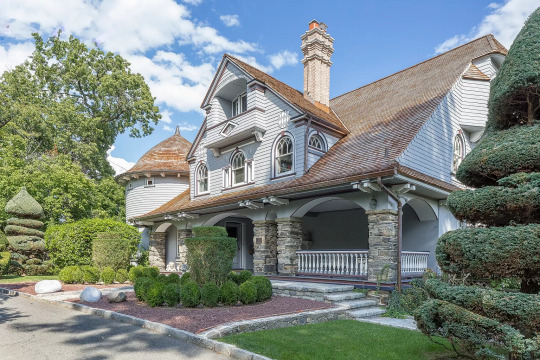
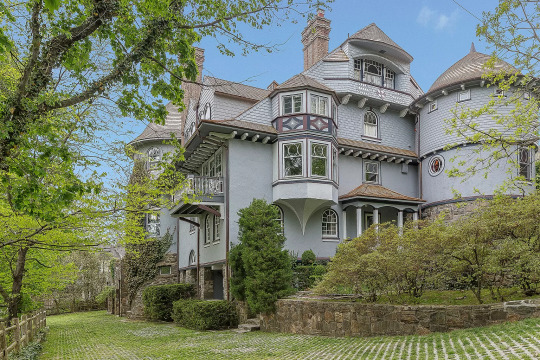
I remembered this 1896 Victorian mansion in Bronxville, NY that sold for $4.17M. it has 7bds, 6ba and took years to sell, b/c it was owned by 2 artists with different styles and buyers didn't like the decor. Take a look.

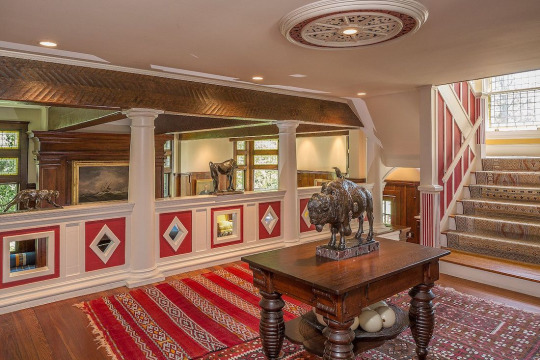
I don't think that the entrance hall is bad. The fireplace area is beautiful, it's a little Inglenook.
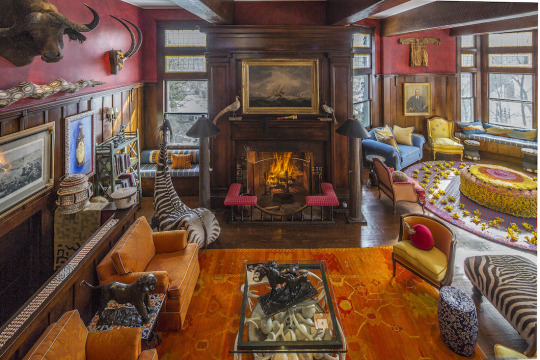
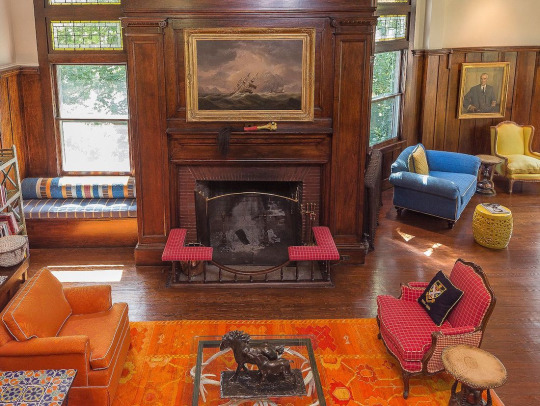
The sitting room has a dramatic, large fireplace.

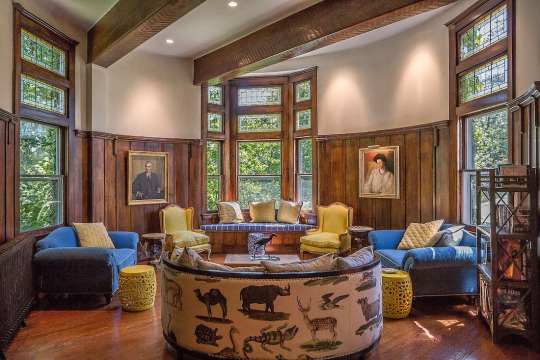
Off to the side is another sitting area that looks nice. It's in the tower, so it makes a great conversation space.
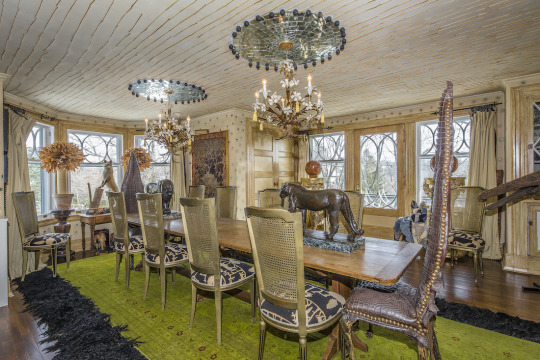
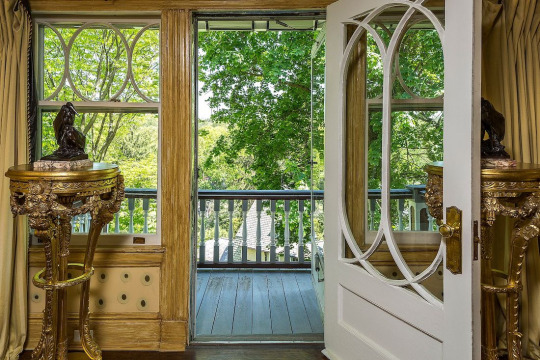
The dining room opens to a terrace. It's a little ornate, but not bad.

The kitchen isn't very big, but it's lively, even though it's white. I like the checkered counters.

Colorful den. You can tell that this is an artist's home. But, this will be be gone, why would it turn buyers off?

The TV room is next to the stairs and is painted bright tangerine. I like it.

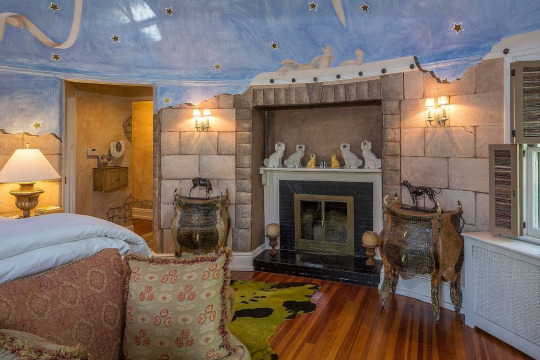
The primary bedroom is located in the top of the tower and is decorated like a castle with a celestial ceiling.
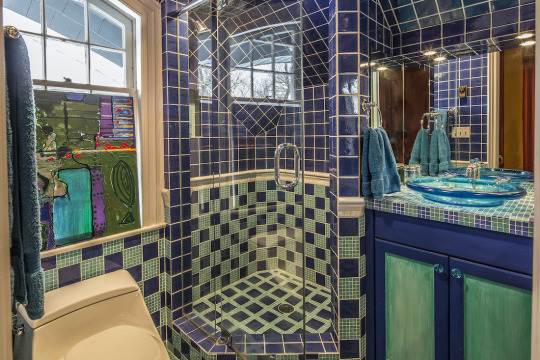
Very interesting tile in the bath.
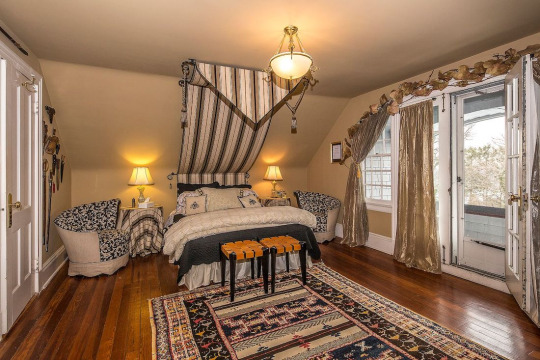

This bedroom is nice and has a door to a terrace. I don't see anything wrong with this house's decor.

One of the artist's has a South African heritage and did this bath in an African theme.
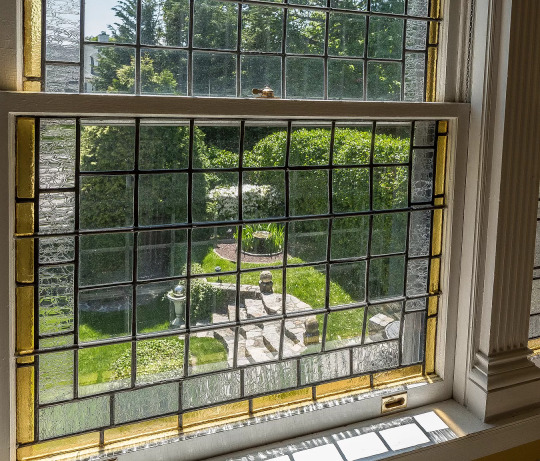
The only photo of the garden is thru this window and it looks beautiful. The lot is .40 acre.
https://www.zillow.com/homedetails/34-Prescott-Ave-Bronxville-NY-10708/66526619_zpid/?
253 notes
·
View notes
Text
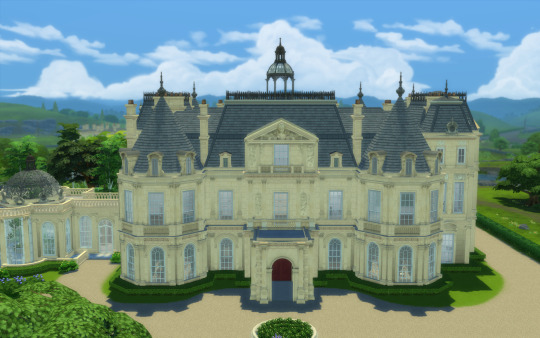
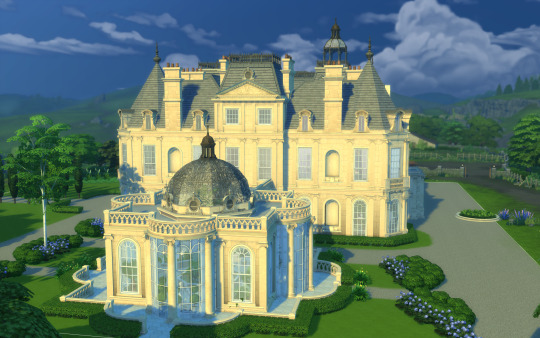
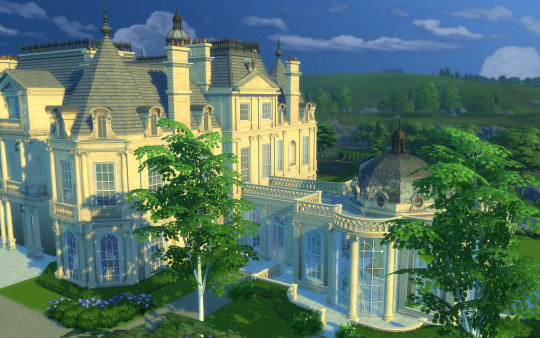
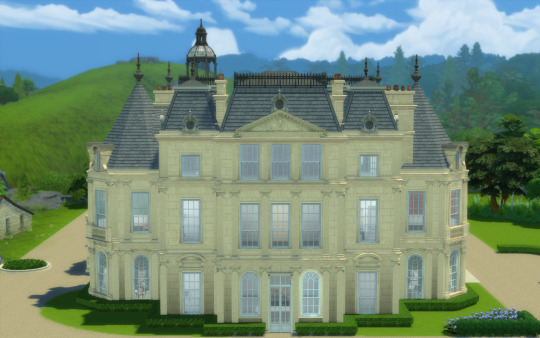
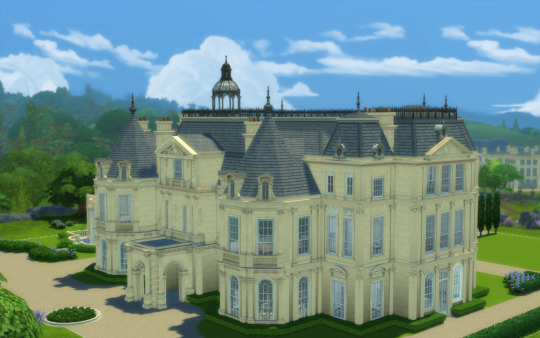

Halton House
Hace un instante
Hi guys!!
I'm sharing Halton House. This is the 15th building for my English Collection and the second Rothchild house I recreated.
I decorated some interiors for reference, but I could not find the real distribution of the house, so I just worked with pictures I found.
You might be familiar to the central hall and stairs, as they are the ones used for Bridgerton House in the series.
I chose to build the version with the conservatory, as I think this was a glory lost to time.
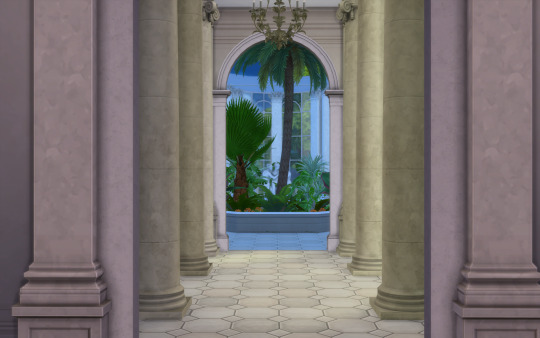


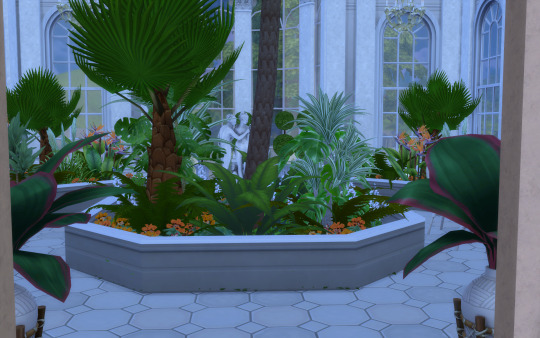

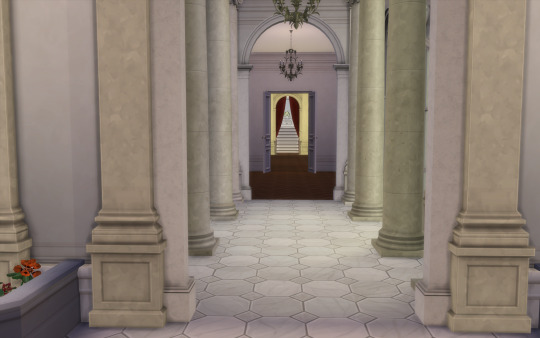
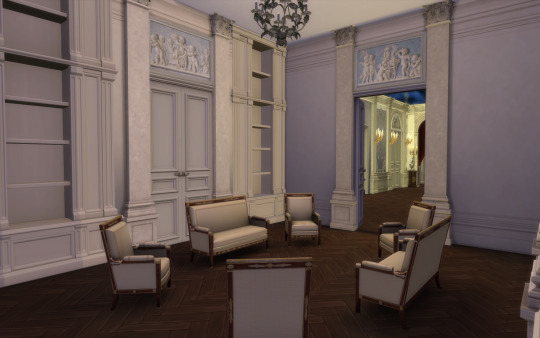
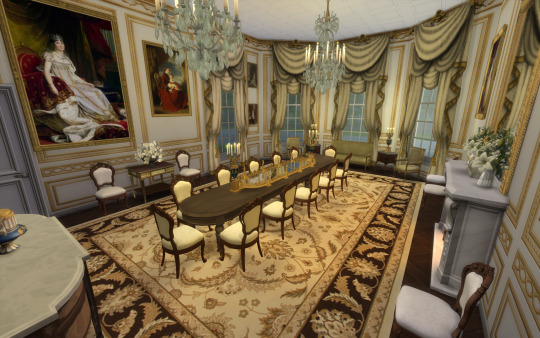





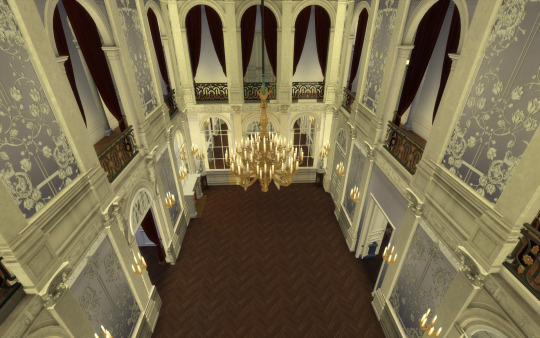


History of the house: Halton House is a country house in the Chiltern Hills above the village of Halton in Buckinghamshire, England. It was built for Alfred Freiherr de Rothschild between 1880 and 1883. It is used as the main officers' mess for RAF Halton and is listed Grade II* on the National Heritage List for England.
There has been a manor house at Halton since the Norman Conquest, when it belonged to the Archbishop of Canterbury. Thomas Cranmer sold the manor to Henry Bradshaw, Solicitor-General in the mid-16th century. After remaining in the Bradshaw family for some considerable time, it was sold to Sir Francis Dashwood in 1720 and was then held in the Dashwood family for almost 150 years.
The site of the old Halton House, or Manor, was west of the church in Halton village. It had a large park, which was later bisected by the Grand Union Canal. In June 1849 Sir George Dashwood auctioned the contents and, in 1853, the estate was sold to Lionel Freiherr de Rothschild.
Lionel then left the estate to his son Alfred Freiherr de Rothschild in 1879. At this time the estate covered an approximately 1,500-acre (610-hectare) triangle between Wendover, Aston Clinton, and Weston Turville.
It is thought the architect was William R. Rodriguez (also known as Rogers), who worked in the design team of William Cubitt and Company, the firm commissioned to build and oversee the project in 1880. Just three years later the house was finished.
The house was widely criticised by members of the establishment. The architect Eustace Balfour, a nephew of the Marquess of Salisbury, described it as a "combination of French Chateau and gambling house", and one of Gladstone's private secretaries called it an "exaggerated nightmare".
At Halton all were entertained by Alfred Freiherr de Rothschild. However, Halton's glittering life lasted less than thirty years, with the last party being in 1914 at the outbreak of World War I. Devastated by the carnage of the war, Freiherr de Rothschild's health began to fail and he died in 1918. Alfred had no legitimate children, so the house was bequeathed to his nephew Lionel Nathan de Rothschild. He detested the place and sold the contents at auction in 1918. The house and by now diminished estate were purchased for the Royal Air Force by the Air Ministry for what was even then a low price of £115,000 (equivalent to £7.08 million in 2023 pounds).
Architecture
For the style of the house Alfred was probably influenced by that of plans for the nearly completed Waddesdon Manor, the home of Baron Ferdinand de Rothschild, his brother-in law. While not so large there is a resemblance, but other continental influences appear to have crept in: classical pediments jut from mansard roofs, spires and gables jostle for attention, and the whole is surmounted by a cupola. The front of the house features a porte-cochère. A Rothschild cousin described it as: "looking like a giant wedding cake".
If the outside was extravagant, the interior was no anti-climax. The central hall (not unlike the galleried two-storey hall at Mentmore Towers) was furnished as the "grand salon". Two further drawing rooms (the east and west) continued the luxurious theme. The dining and billiards rooms too were furnished with 18th-century panelling and boiseries. The theme continued up the grand, plaster panelled staircase to the bedrooms. The whole was furnished in what became known as "Le Style Rothschild", that is, 18th-century French furniture, boulle, ebony, and ormolu, complemented by Old Masters and fine porcelain.
A huge domed conservatory known as the winter garden was attached to the house.
For more info: https://en.wikipedia.org/wiki/Halton_House
------------------------------------------------------------------------------
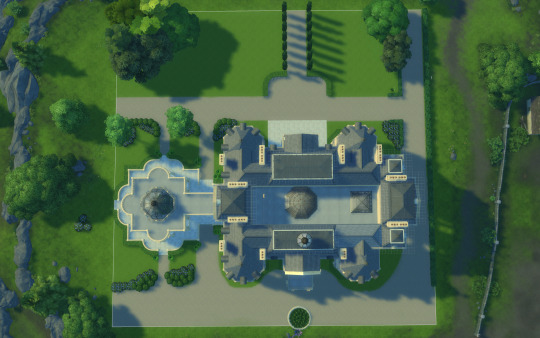
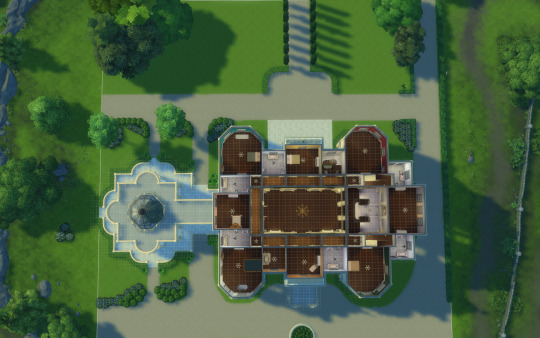
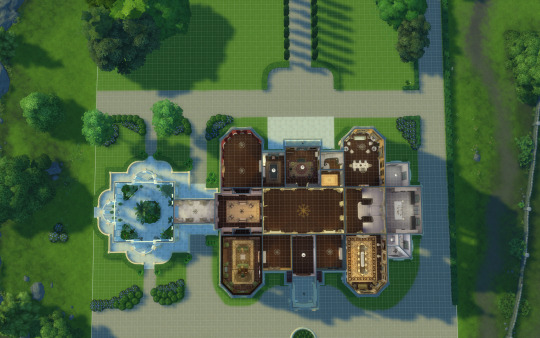
This house fits a 64x64 lot (You can fit the main building to the 50x50 or 50x40 lot if you lose the garden and conservatory)
I furnished just the principal rooms, so you get an idea. The rest is unfurnished so you create the interiors to your taste!
Hope you like it.
You will need the usual CC I use:
all Felixandre cc
all The Jim
SYB
Anachrosims
Regal Sims
King Falcon railing
The Golden Sanctuary
Cliffou
Dndr recolors
Harrie cc
Tuds
Lili's palace cc
Please enjoy, comment if you like it and share pictures with me if you use my creations!
Early access: 08/18/2024
DOWNLOAD: https://www.patreon.com/user?u=75230453
#sims 4 architecture#sims 4 build#sims4#sims 4 screenshots#sims4building#sims4play#sims 4 historical#sims4palace#sims 4 royalty#ts4#sims4life#sims 4 cc#sims 4#sims 4 legacy#sims 4 gameplay#thesims4#the sims 4#ts4cc#ts4 download#ts4 simblr#ts4 gameplay#my sims#sims community#simblr#ts4 screenshots#ts4 legacy
129 notes
·
View notes
Text




khan al-umdan (caravanserai of the columns) in acre is one of palestine's best-preserved caravanserai, a type of inn historically common across asia, north africa, the caucuses, and southern europe, especially for travelers along trade routes like the silk road. it was built in 1785 on the order of ottoman governer ahmed pasha al-jazaar (who also has a mosque named for him nearby). the clock tower was added in 1906 to celebrate the silver jubilee of sultan abdul hamid II.
khan al-umdan served as more than just an inn - due to its proximity to acre's port, it also served as a spot for merchants to store and sell wares. it also gained importance to the baha'i faith, as it served as a site where baha'ulla (founder of the religion, he was imprisoned in acre later in life) received guests, and held a baha'i school. many palestinians found refuge inside the khan during the nakba, but were later forcibly expelled and evicted up to the 1980s.
it continues to be used for events today, but not as often as it used to be. despite being a popular tourist attraction and designated as a world heritage site, the caravanserai has also been facing further neglect due to gentrification and has also been in danger of being dispossesed for quite some time now.
#palestine#architecture#my posts#the word ''khan'' in arabic and hebrew has the same origin as ''caravanserai''#no relation to mongolic/turkic ''khan'' (king) (which has no relation to english ''king''/german ''kaiser''/etc)#also the world center for baha'i is in acre too.. they get a lot of shit across the me unfortunately especially iran where it originated#palestine also has a pretty substantial ahmadiyya population for a middle eastern country. the leader managed to convert quite a few#families in the 1920s while visiting#and ofc there's the druze which is a whole other thing
127 notes
·
View notes
Text

Yosemite National Park, California, United States: Yosemite National Park is a national park in California. It is bordered on the southeast by Sierra National Forest and on the northwest by Stanislaus National Forest. The park is managed by the National Park Service and covers 759,620 acres in four counties – centered in Tuolumne and Mariposa, extending north and east to Mono and south to Madera. Designated a World Heritage Site in 1984, Yosemite is internationally recognized for its granite cliffs, waterfalls, clear streams, giant sequoia groves, lakes, mountains, meadows, glaciers, and biological diversity. Wikipedia
92 notes
·
View notes
Text
Brazil’s Farmers Are Plowing Over an Ancient Amazon Civilization
An underfunded agency is up against the agriculture industry’s unstoppable expansion — and humanity’s heritage hangs in the balance.

In the badlands of the southwestern Amazon, Antonia Barbosa is fighting to protect ancient archaeological finds from Brazil’s unstoppable $523 billion agribusiness industry.
There, farmers view the land as a cash cow and the area’s historic geometric earth carvings, known as geoglyphs, are in the way. Already, at least nine of the most emblematic ancient sites — some of which span as many as 1,260 feet wide (385 meters) and 16 feet deep — have been plowed over in the past few years.
This is casually erasing evidence of a civilization that took off around the time of Christ and flourished for about 1,000 years, about as long as ancient Greece. And as farmers move deeper into the Amazon to meet global demand for soy, corn and sugar, geoglyphs are being destroyed just as fast as they’re being discovered.
“In our own backyard, we have a heritage that is as giant and as important as the pyramids in Egypt,” said Barbosa, the sole archaeologist that Brazil’s Iphan institute of cultural heritage has in the state of Acre to protect the sites. “They’ve lasted for more than 2,000 years and we’re going to destroy them in less than a generation.”
It’s an uphill battle for Barbosa. Farmers and ranchers are Brazil’s most powerful political and economic force, responsible for 24% of its gross domestic product and helping secure the country’s place as one of the world’s top two crop exporters. Acre is a part of that frontier, with soy production tripling in two years to an estimated 60,600 tons and farmland growing to 43,000 acres. That leaves little Barbosa or Iphan can do to protect the sites besides charge fines. But that’s only a drop in the bucket, particularly for big industrial farms.
“A landowner destroys an archaeological site because he thinks it will be more profitable to destroy, pay the fine and then use the land,” said Barbosa.
Continue reading.
#brazil#politics#environmental justice#indigenous rights#history#archaeology#brazilian politics#amazon rainforest#image description in alt#mod nise da silveira
40 notes
·
View notes
Text





The Pink Flamingo House
You can find the video here!!
youtube
Now let's climb the stairs and check out the second floor which was far more decayed than the main!!
Sitting abandoned for well over a decade this farmhouse and barn are in pretty rough shape. The house has holes in the roof, with mold and peeling paint throughout but the interior is in surprisingly good condition considering. The last occupants left a lot of vintage furniture behind but few personal items. It sits along a quiet road hidden by the trees and fortunately has not been found by vandals. The barn is in even worse condition, with floors collapsing and the foundation crumbling.
The large 100 plus acre property sold for a few million dollars over a decade ago and is likely worth a whole lot more now! Bought by an investor, using it as a place to park their money while the land inevitably continues to rise in value.
Surprisingly, this property is on a heritage list and hopefully will be saved one day but it would have to be soon since the home continues to decay as time passes.
#abandoned#urbex#urban exploring#urban exploration#bandos#abandoned buildings#abandoned places#forgotten#forgotten buildings#abandoned houses#abandoned homes#forgotten places#lost places#abandoned time caosules#abandoned time capsule#abandoned farmhouses#farmhouses#time capsules#time capsule#Youtube
22 notes
·
View notes
Text
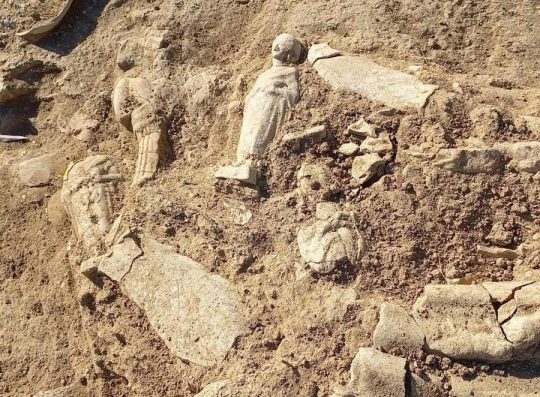
Rich Votive Deposit Discovered in Sicily's Valley of the Temples
At least sixty terracotta figurines, female protomes, and busts, oil lamps, and small vases, a rich votive deposit of bronze fragments were found in the Valley of the Temples in Agrigento, on the southwest coast of Sicily.
The objects were found in House VII b, which forms part of the housing complex north of the temple of Juno. The campaign is fully funded and supported by the Sicilian Region through the Valley of the Temples Archaeological Park, directed by Roberto Sciarratta, and is led by archaeologist Maria Concetta Parello.
In an announcement published by the Sicilian Region Institutional Portal: “The findings allow us to understand the dynamics of the destruction of Agrigentum in 406 BC by the Carthaginians, when the inhabitants had to flee in exodus towards the city of Gela.”
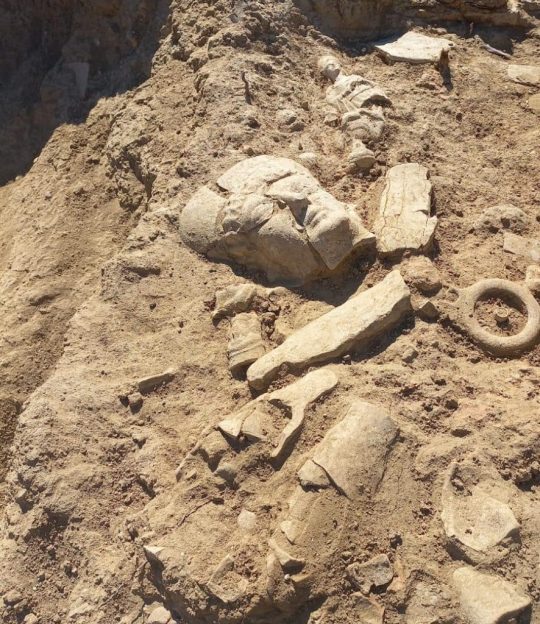
The votive deposit, which would appear to have been arranged above the destruction levels of the house, may tell the story of the time when its objects were recovered by the Akragantines after the destruction. To define with certainty the function of the interesting deposit will require further research, paying close attention to the stratigraphic connections between the deposit and the living and abandonment levels of the house.
The Valley of the Temples forms part of the ancient city of Agrigentum, situated in the province of Agrigento, Sicily. Since 1997, the Valley of the Temples (covering 3212 acres) has been included in the UNESCO World Heritage List.
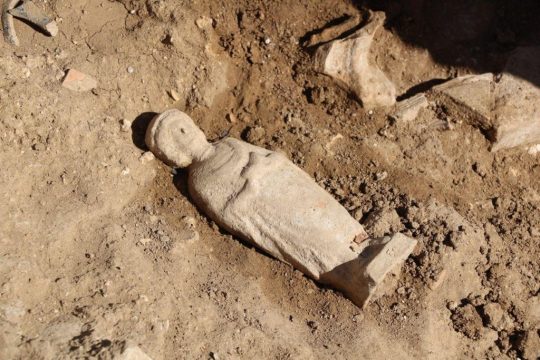
According to the Greek historian, Thucydides, Agrigentum was founded around 582-580 BC by Greek colonists from Gela in eastern Sicily, with further colonists from Crete and Rhodes. It was routed by the forces of Carthaginian general Himilko in 406 B.C. Agrigento’s residents fled to nearby Gela when Himilko sacked their city, but then he took Gela too. All of the Greek colonies on Sicily fell to Himilko and were made vassals of Carthage. Punic primacy would not last long, however. Timoleon of Corinth defeated Carthage in Sicily and liberated the Greek cities in 399 B.C.
By Leman Altuntaş.
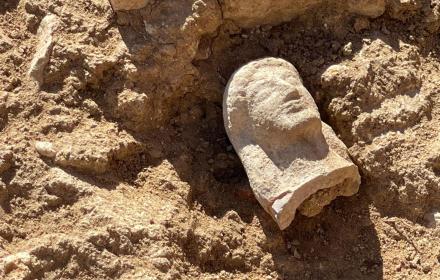
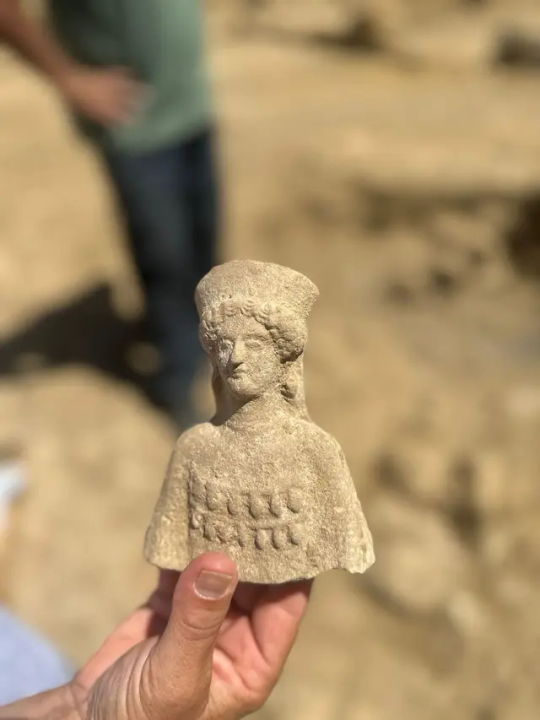

#Rich Votive Deposit Discovered in Sicily's Valley of the Temples#Valley of the Temples in Agrigento#temple of Juno#terracotta figurines#ancient artifacts#archeology#archeolgst#history#history news#ancient history#ancient culture#ancient civilizations#ancient sicily#ancient greece#greek history#greek art
273 notes
·
View notes
Text
Today, I learned that one of my great-great-great-great-great grandfathers was from Europe. After his parents died when he was only a teenager, he traveled to America. Setting out with only books for luggage, he arrived and eventually managed to acquire around one hundred acres of land, going on to found a school named in his likeness that also doubled as a church. Later, he helped with the planning and development of roads in his city. And apparently, on the other side of my family, there's a possibility that I'm German. I've jokingly suspected this for a while because of various habits and traits I have. But having this hypothesis actually confirmed would be amusing. Anyway, I implore you to unearth your heritage and find out where you come from.
28 notes
·
View notes
Text
"The U.S. government is entering a new era of collaboration with Native American and Alaska Native leaders in managing public lands and other resources, with top federal officials saying that incorporating more Indigenous knowledge into decision-making can help spur conservation and combat climate change.
Federal emergency managers on Thursday also announced updates to recovery policies to aid tribal communities in the repair or rebuilding of traditional homes or ceremonial buildings after a series of wildfires, floods and other disasters around the country.
With hundreds of tribal leaders gathering in Washington this week for an annual summit, the Biden administration is celebrating nearly 200 new agreements that are designed to boost federal cooperation with tribes nationwide.
The agreements cover everything from fishery restoration projects in Alaska and the Pacific Northwest to management of new national monuments in the Southwestern U.S., seed collection work in Montana and plant restoration in the Great Smoky Mountains.
“The United States manages hundreds of millions of acres of what we call federal public lands. Why wouldn’t we want added capacity, added expertise, millennia of knowledge and understanding of how to manage those lands?” U.S. Interior Assistant Secretary Bryan Newland said during a panel discussion.
The new co-management and co-stewardship agreements announced this week mark a tenfold increase over what had been inked just a year earlier, and officials said more are in the pipeline.
Newland, a citizen of the Bay Mills Indian Community in northern Michigan, said each agreement is unique. He said each arrangement is tailored to a tribe’s needs and capacity for helping to manage public lands — and at the very least assures their presence at the table when decisions are made.
The federal government is not looking to dictate to tribal leaders what a partnership should look like, he said...
The U.S. government controls more than a quarter of the land in the United States, with much of that encompassing the ancestral homelands of federally recognized tribes...
Tribes and advocacy groups have been pushing for arrangements that go beyond the consultation requirements mandated by federal law.
Researchers at the University of Washington and legal experts with the Native American Rights Fund have put together a new clearinghouse on the topic. They point out that public lands now central to the country’s national heritage originated from the dispossession and displacement of Indigenous people and that co-management could present on opportunity for the U.S. to reckon with that complicated legacy...
In an attempt to address complaints about chronic underfunding across Indian Country, President Joe Biden on Wednesday signed an executive order on the first day of the summit that will make it easier for tribes to find and access grants.
Deanne Criswell, administrator of the Federal Emergency Management Agency, told tribal leaders Thursday that her agency [FEMA] began work this year to upgrade its disaster guidance particularly in response to tribal needs.
The Indigenous people of Hawaii have increasingly been under siege from disasters, most recently a devastating fire that killed dozens of people and leveled an entire town. Just last month, another blaze scorched a stretch of irreplaceable rainforest on Oahu.
Tribes in California and Oregon also were forced to seek disaster declarations earlier this year after severe storms resulted in flooding and mudslides...
Criswell said the new guidance includes a pathway for Native American, Alaska Native and Hawaiian communities to request presidential disaster declarations, providing them with access to emergency federal relief funding. [Note: This alone is potentially a huge deal. A presidential disaster declaration unlocks literally millions of dollars in federal aid and does a lot to speed up the response.]
The agency also is now accepting tribal self-certified damage assessments and cost estimates for restoring ceremonial buildings or traditional homes, while not requiring site inspections, maps or other details that might compromise culturally sensitive data."
-via AP, December 7, 2023
#united states#us politics#natural disasters#disaster relief#public lands#land back#indigenous#native american#first nations#indigineous people#sovereignty#president biden#biden administration#hope#good news#land management
596 notes
·
View notes
Text
Point Ellice House is closed.
We were informed by the Province of BC that they could not provide sustainable funding for us (though they announced just a few weeks ago that they had a 5 BILLION dollar surplus). I am angry. It feels very much like I am watching all of the work I have done over the last 3 and a half years crumble in front of me. All of the tedious care that I have given to the collection, to making the history of Victoria accessible, to sharing the stories of this place with others.
It feels like it was for nothing.
A lot of people are asking me what will happen to the site. I don't know. The province doesnt know either. They could put the site out for tender again, asking if any society will want to run this place. How anyone is supposed to run 2 acres of heritage gardens, a collection of 16, 0000 objects, and a 160 year old house on $80,000 is a fucking mystery to me. They could sell off the items in the collection, bulldoze it and throw in a parking lot for all I know.
You want to chat about erasing history? This is it folks. It’s the death by a thousand cuts where these places that have important stories to tell are shuttering their doors and laying off the staff who do the work. This isn't the end of the closures. Barkerville is likely the next site to go.
If you want to help, please consider sending a letter to Minister Lana Popham. She is the minister of tourism who directly oversees our site. Her email is: [email protected].
I will be sending her a letter expressing my anger and disappointment.
When I started at PEH, we followed our to develop and support heritage work that is inclusive, diverse, and representative of communities in the past and present. For what it is worth, I am proud of the work I did while I was here. I just wish it could have continued.

376 notes
·
View notes
Text
Environmental charity Climate Force is collaborating with the Eastern Kuku Yalanji people and rangers to create a wildlife corridor that runs between two UNESCO World Heritage Sites in Australia: the Daintree Rainforest and the Great Barrier Reef.
Wildlife habitats in this region have become fragmented due to industrial agriculture, and a forested corridor is expected to help protect biodiversity by allowing animals to forage for food and connect different populations for mating and migration.
The project aims to plant 360,000 trees over an area of 213 hectares (526 acres); so far, it has planted 25,000 trees of 180 species on the land and in the nursery, which can also feed a range of native wildlife.
The project is ambitious and organizers say they’re hopeful about it, but challenges remain, including soil regeneration and ensuring the planted trees aren’t killed off by feral pigs or flooding.
#good news#environmentalism#science#environment#nature#animals#conservation#indigenous peoples#rainforest
74 notes
·
View notes
Text



WE'RE excited to help promote Park in the Past's Roman Fort replica - the only fully-sized Roman fort replica in the UK!
Park in the Past is an exciting and innovative heritage and conservation project aiming to create a totally unique heritage attraction and vital community resource.
Set in an ancient Welsh landscape, the park comprises 120 acres of outstanding natural beauty offering woodlands and wetlands, a magnificent 35-acre lake and the gorgeous River Alyn, as well as wonderful walks and spacious fields.
They need our help to build an amazing prehistoric realm and a full-scale Roman fort and Celtic village.
You can donate here: Crowdfunder
More information
47 notes
·
View notes
Text


























Appuldurcombe House
Hi guys!!
I'm sharing Appuldurcombe House (abandoned/in ruins). This is the 20th building for my English Collection.
I decorated most of the house ground floor, for reference.
History of the house:
Appuldurcombe House is the shell of a large 18th-century English Baroque country house of the Worsley family. The house is situated near to Wroxall on the Isle of Wight, England. It is now managed by English Heritage and is open to the public. A small part of the 300-acre (1.2 km2; 0.47 sq mi) estate that once surrounded it is still intact, but other features of the estate are still visible in the surrounding farmland and nearby village of Wroxall, including the entrance to the park, the Freemantle Gate, now used only by farm animals and pedestrians.
Appuldurcombe began as a priory in 1100. It became a convent, then the Elizabethan home of the Leigh family. The large Tudor mansion was bequeathed in 1690 to Sir Robert Worsley, 4th Baronet, who began planning a suitable replacement.
The present house was begun in 1702. The architect was John James. Sir Robert never saw the house fully completed. He died on 29 July 1747; in his memory a monument was erected overlooking the house on Stenbury Down.
The house was greatly extended in the 1770s by his great-nephew Sir Richard Worsley, 7th Baronet Worsley of Appuldurcombe.
Worsley had left the estate saddled with heavy debts, but Appuldurcombe passed to his niece, Henrietta Anna Maria Charlotte (daughter of John Bridgeman Simpson). She married the Hon. Charles Anderson-Pelham, later first Earl of Yarborough, in 1806. The founder of the Royal Yacht Squadron at Cowes, he made few changes to the house and was quite happy to retain the property as a convenient base for his sailing activities.
Appuldurcombe House circa 1910
In 1855 the estate was sold. An unsuccessful business venture ran Appuldurcombe as a hotel, but with its failure, the house was then leased as Dr Pound's Academy for young gentlemen.
Advertisement for Appuldurcombe College 1889
Advertisement for Appuldurcombe College in the Times, London, April 19, 1889
The house was inhabited in 1901–1907 by a hundred Benedictine monks who had been exiled from Solesmes Abbey in France and were shortly to settle at Quarr Abbey on the Isle of Wight.
Although the house is now mainly a shell, its front section has been re-roofed and glazed, and a small part of the interior recreated. The house has become well known as one of the supposedly most haunted places on the island.
More history: https://en.wikipedia.org/wiki/Appuldurcombe_House
------------------------------------------------------------------------------
This house fits a 64X64 lot, but it coulf fit a 50x50 too.
I only decorated some of the important rooms. All the rest of the house is up to your taste to decor.
Hope you like it.
You will need the usual CC I use:
all Felixandre cc
all The Jim
SYB
Anachrosims
Regal Sims
King Falcon railing
The Golden Sanctuary
Cliffou
Dndr recolors
Harrie cc
Tuds
Lili's palace cc
Please enjoy, comment if you like the house and share pictures of your game!
Follow me on IG: https://www.instagram.com/sims4palaces/
@sims4palaces
Ealry acces: October 20
DOWNLOAD: https://www.patreon.com/posts/appuldurcombe-112466692
#sims 4 architecture#sims 4 build#sims4#sims 4 screenshots#sims4building#sims 4 historical#sims4play#sims4palace#sims 4 royalty#ts4#ts4 download#ts4 simblr#ts4 gameplay#ts4 screenshots#sims 4#the sims 4#ts4 legacy#sims4 build#sims 4 gameplay#thesims4
82 notes
·
View notes